To get the chords shapes that belong to any major key, we simply need to apply this pattern upon the 7 notes in that key’s major scale:

…and we’ll end up with 7 chords in that key. For example, let’s try it with the Key of C major. Here are the 7 notes in the C major scale:

We simply need to apply the major/minor/diminished pattern upon the 7 scale degrees. The names of each note remain as-is. All we do is add the chord type (major, minor, or diminished) upon the corresponding scale degree:

This gives us the 7 chords in the Key of C Major. You may come across the term diatonic, which essentially means the notes or chords that belong to a specific key. That’s exactly what we have here. And again — every major key uses this same pattern for its chords. Learn it once, apply it anywhere!
Staying on the Key of C major for a moment, let’s rewrite those 7 chords a bit more neatly. This is how you may see them written, normally:

You’ll notice the major chords don’t typically have the “major” suffix spelled out in it’s entirety. Instead, it’s simply assumed — when reading chord names, you can assume a chord is major unless it’s indicated otherwise. In any major key the 1st, 4th, and 5th chords are major:
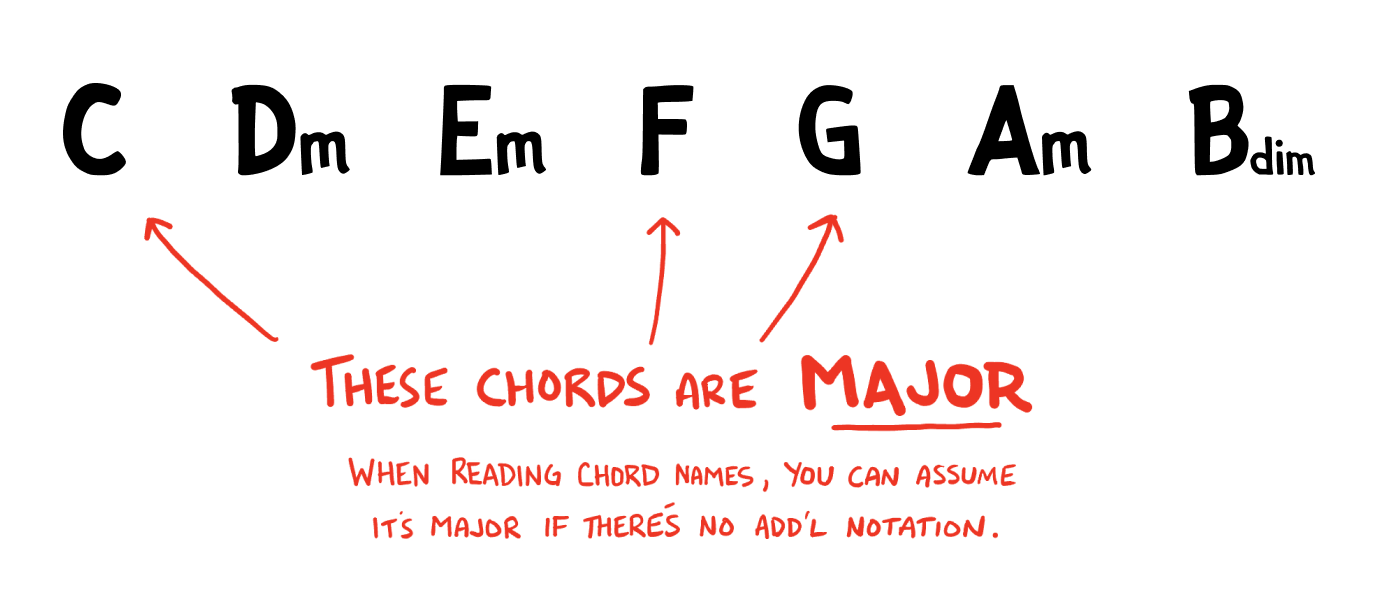
For the minor chords, the convention is to add a lowercase “m” as a suffix. In any major key the the 2nd, 3rd, and 6th chords are minor:
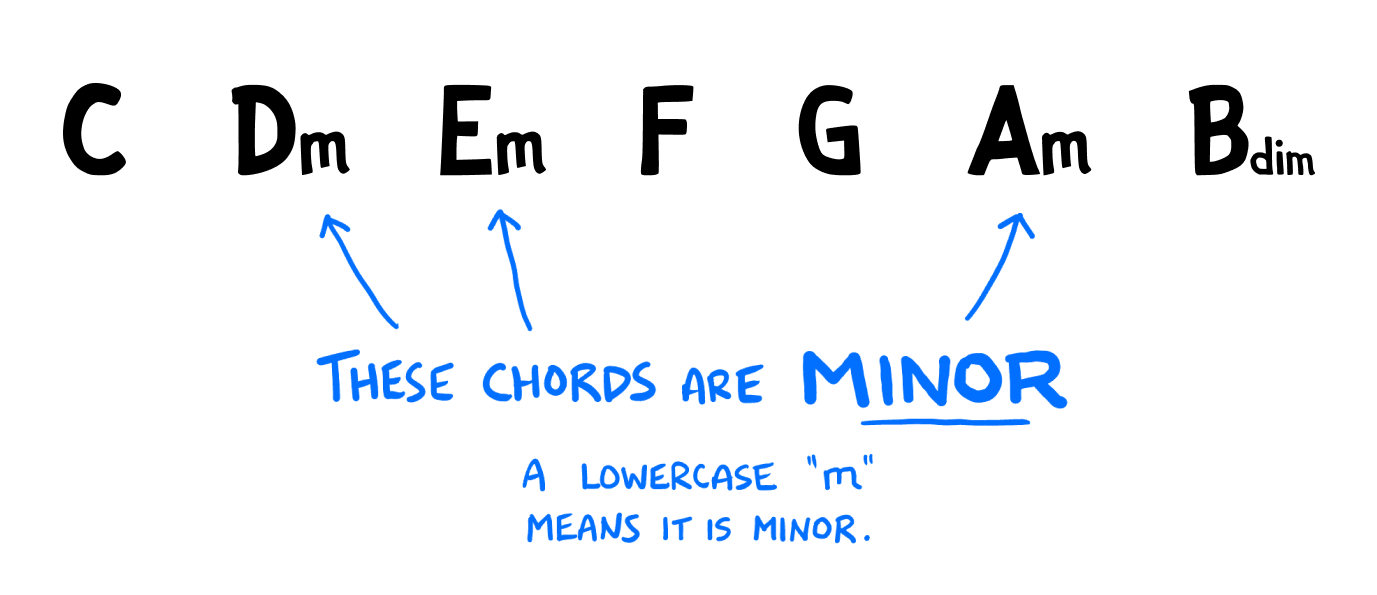
Finally, there’s the diminished chord that’s built upon the 7th tone of the scale. This is often annotated with a degree sign — e.g. B° would read as “B diminished”. In popular music, diminished chords are exceedingly rare.
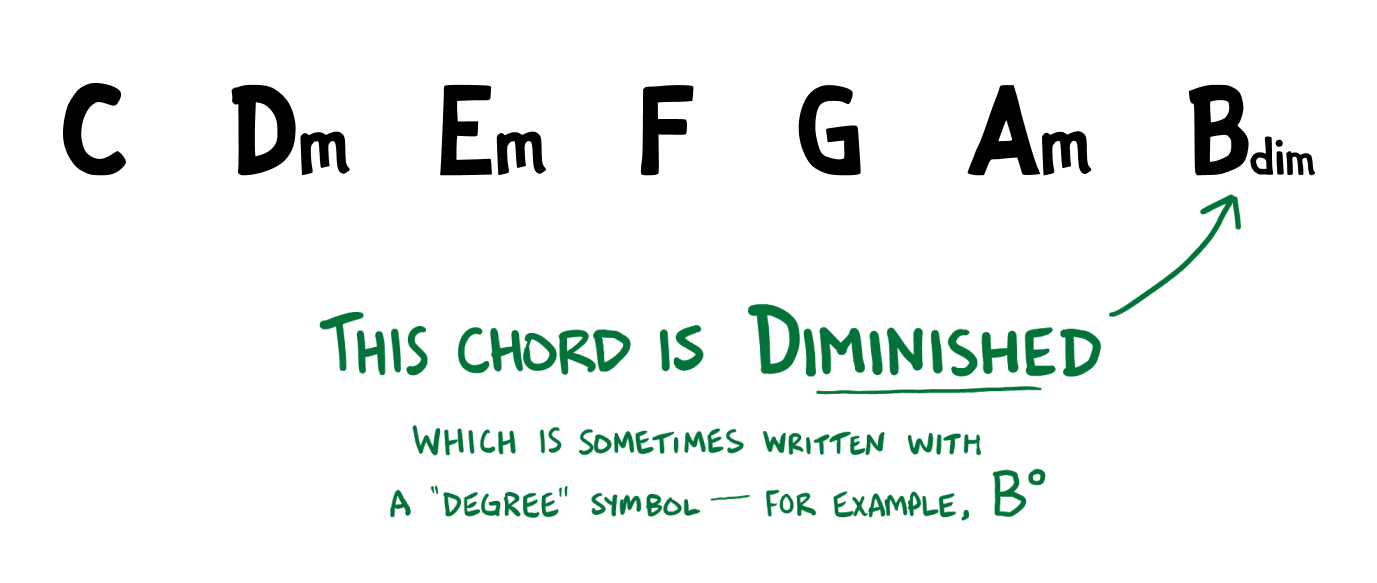
Since the previous lesson taught us the notes in each major scale, all we need to do is apply this chord-type formula — and we’re all set. Here’s what it looks like for the 5 most common keys on guitar (C, G, D, A, and E):
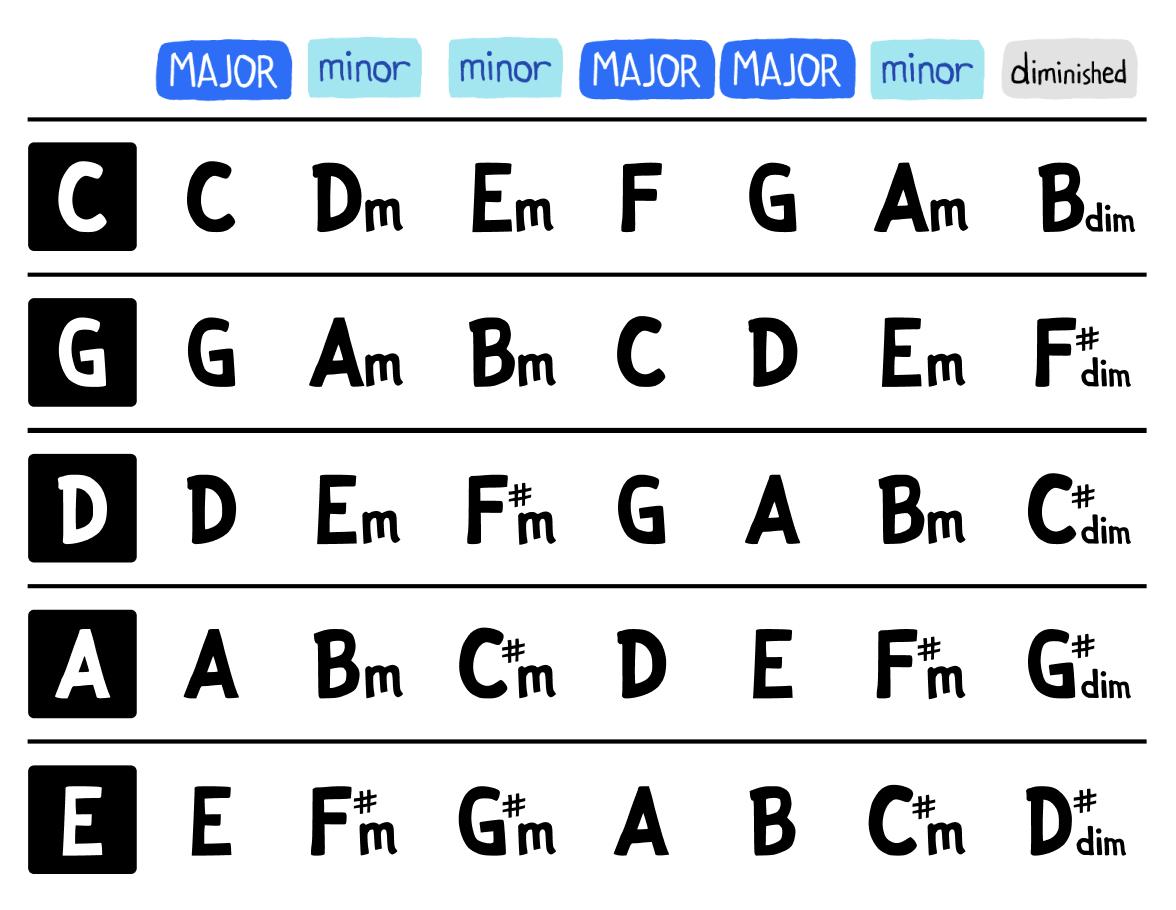
Here’s a full view of the 7 chords used in each of the 12 major keys.
Remember, most popular songs played on guitar are going to be in the key of C, G, A, D or E — because the chords in these keys are generally easier to play (i.e. lots of open chords, few barre chords).
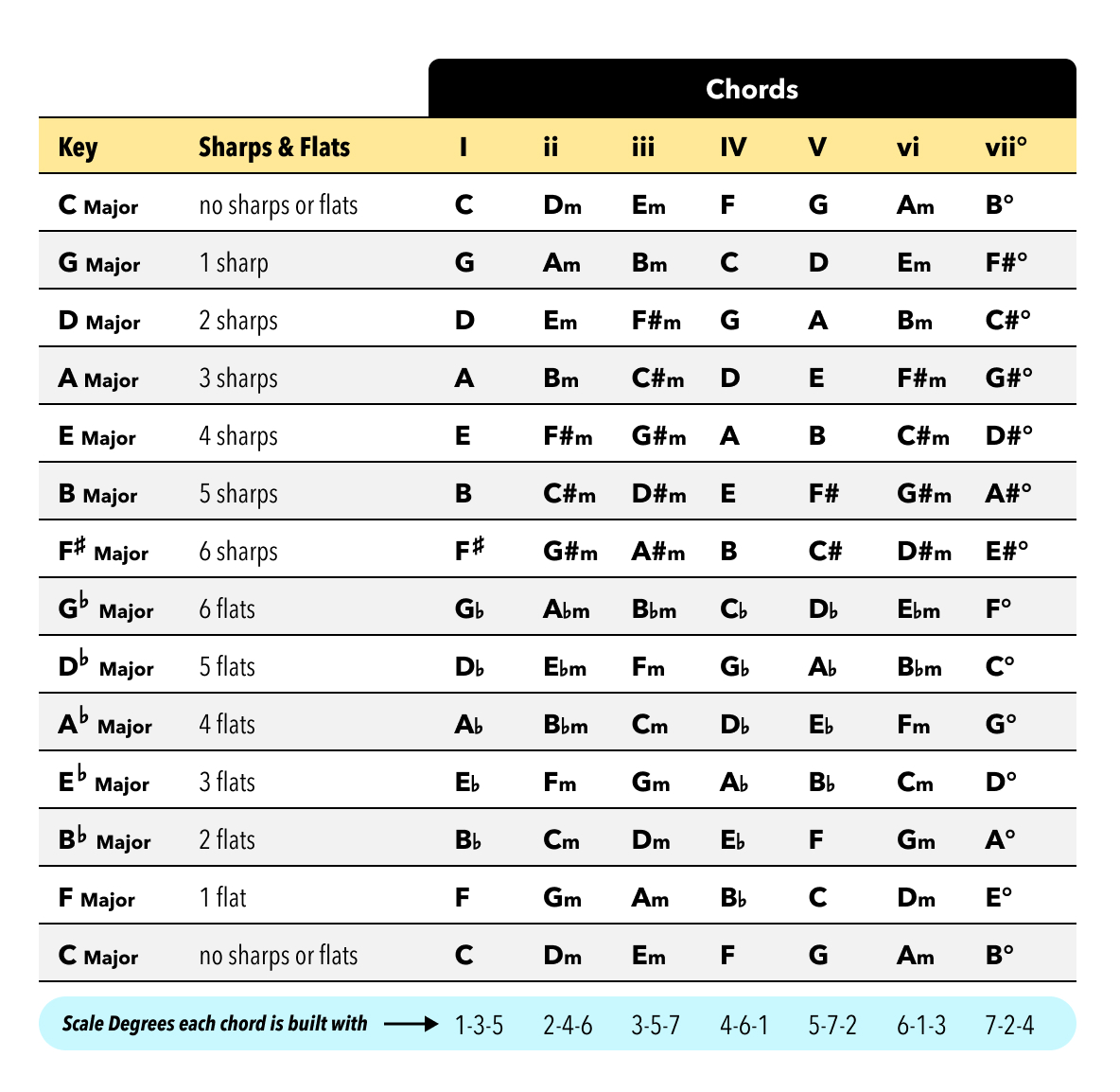
Don’t feel like you need to memorize this entire table! At least 80% of the time, you’ll be using the five keys mentioned in the previous paragraph… if you want to memorize anything, start with those.
In the next lesson, I’ll talk about the Roman numeral numbering system you may have noticed in the graphic above. This gives us an incredibly helpful system for referring to each chord in any major key. Let’s get to it!